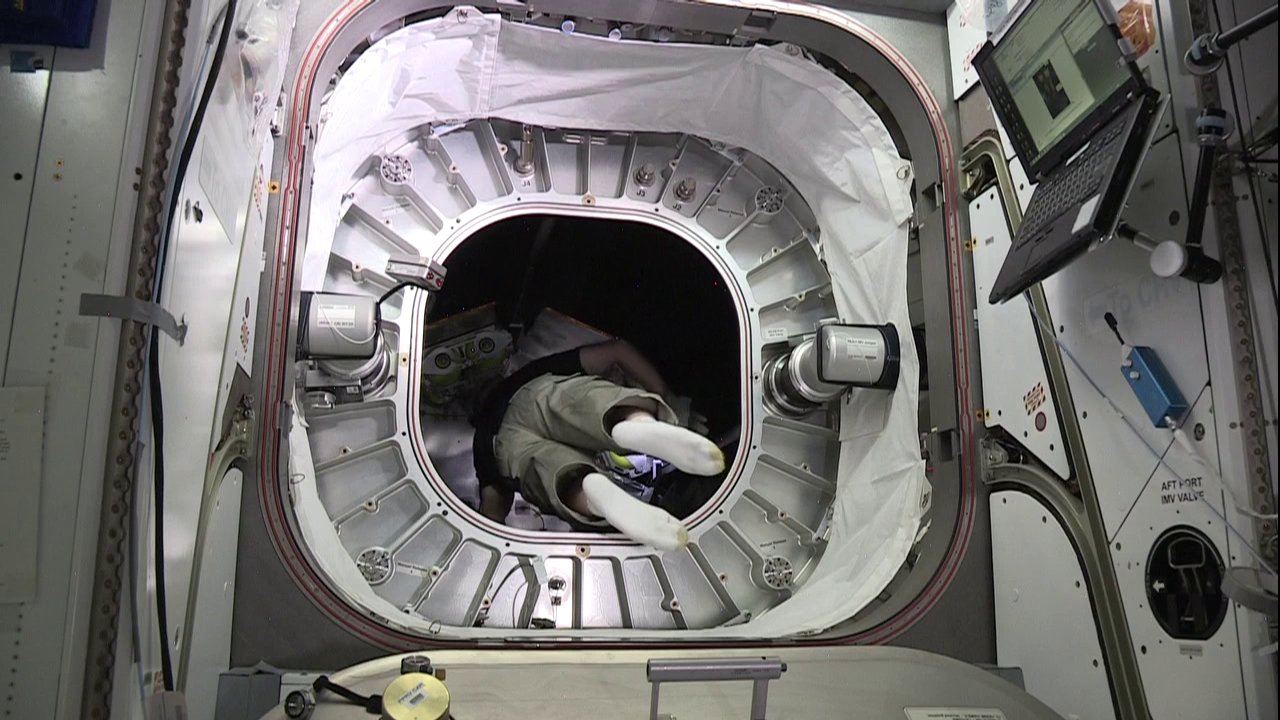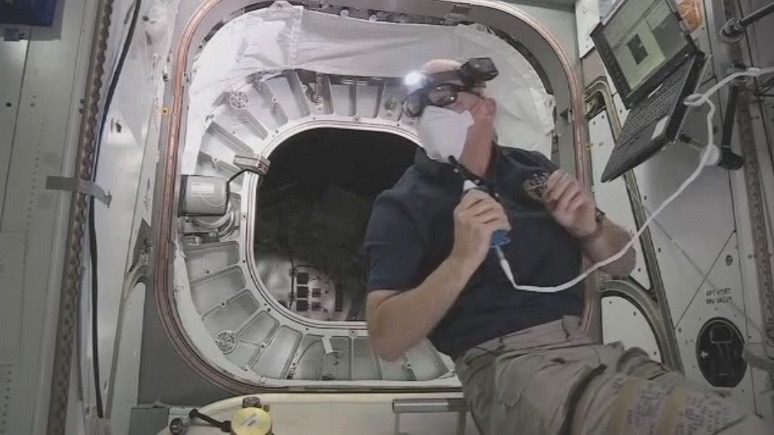
The International Space Station's new inflatable habitat has had its first visitors.
NASA astronaut Jeff Williams opened the hatch leading to the Bigelow Expandable Activity Module (BEAM) for the first time today (June 6) at 4:47 a.m. EDT (0847 GMT), NASA officials said.
Williams and cosmonaut Oleg Skripochka then entered BEAM "to collect an air sample and begin downloading data from sensors on the dynamics of BEAM's expansion," NASA officials wrote in an update today. "Williams told flight controllers at Mission Control, Houston, that BEAM looked 'pristine' and said it was cold inside, but that there was no evidence of any condensation on its inner surfaces."

BEAM, which was built by Nevada-based Bigelow Aerospace, launched toward the International Space Station (ISS) April 8 in a compressed configuration aboard SpaceX's robotic Dragon cargo capsule. The module was attached to the ISS a week later and inflated during a seven-hour stretch on May 28. (An earlier attempt to expand BEAM, on May 26, was aborted when pressures inside the habitat rose to higher-than-expected levels.)
BEAM is part of a project to test how expandable habitats — which provide more usable volume per unit launch mass than do traditional rigid modules — perform in space. Over the next two years, NASA and Bigelow will study how well BEAM protects against temperature extremes, radiation and micrometeorite strikes.
Astronauts will not live inside BEAM during this time; rather, they will make occasional forays into the module to deploy sensors or perform inspections, NASA officials have said. The next opportunities for crewmembers to enter the module will come Tuesday and Wednesday (June 7 and June 8), the officials added.

In its inflated state, BEAM measures 13 feet (4 meters) long and 10.5 feet (3.2 m) wide, and provides 565 cubic feet (16 cubic m) of internal volume. (The compressed BEAM was about 7 feet long by 8 feet wide, or 2.1 by 2.4 m).
Get the Space.com Newsletter
Breaking space news, the latest updates on rocket launches, skywatching events and more!
Bigelow Aerospace is developing much larger expandable habitats, which the company hopes will become the backbone of future space stations and outposts on other worlds, such as Mars. The B330 module, for example, will provide 11,650 cubic feet (330 cubic m) of internal volume.
Follow Mike Wall on Twitter @michaeldwall and Google+. Follow us @Spacedotcom, Facebook or Google+. Originally published on Space.com.
Join our Space Forums to keep talking space on the latest missions, night sky and more! And if you have a news tip, correction or comment, let us know at: community@space.com.

Michael Wall is a Senior Space Writer with Space.com and joined the team in 2010. He primarily covers exoplanets, spaceflight and military space, but has been known to dabble in the space art beat. His book about the search for alien life, "Out There," was published on Nov. 13, 2018. Before becoming a science writer, Michael worked as a herpetologist and wildlife biologist. He has a Ph.D. in evolutionary biology from the University of Sydney, Australia, a bachelor's degree from the University of Arizona, and a graduate certificate in science writing from the University of California, Santa Cruz. To find out what his latest project is, you can follow Michael on Twitter.









